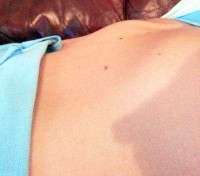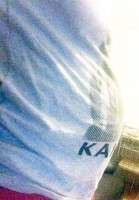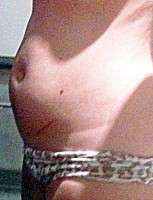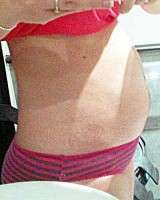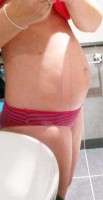Does a tummy tuck repair diastasis recti
Tummy Tuck to fix abdominal muscle weakness or Diastasis Recti
A tummy tuck fixes the separation between the two abdominal Recti muscles by bringing them toghter and sticking them. It is not possible to do this without a tummy tuck. (S. Sean Younai, MD, FACS, Beverly Hills Plastic Surgeon)
Depends what you mean by a full tummy tuck. If you are referring to the length of incision required for a full tummy tuck then yes. It is possible to have a slightly shorter incision and just do repair of the the muscle.
However it is not possible to do the repair without any scarring. Most patients who have a significant diastasis also have some loose skin and want that removed. (Leila Kasrai, MD, FRCSC, Toronto Plastic Surgeon)
Is a Tummy Tuck Required to Fix Diastasis Recti?
Although a tummy tuck is not necessary to repair a diastasis recti, it makes it a lot easier for the surgeon to treat both problems at once. If a sizable diastasis is present then there would be a tremendous amount of redundant skin after the repair without a tummy tuck. (Thomas Guillot, MD, Baton Rouge Plastic Surgeon)
Endoscopic tummy tuck
Technically and endoscopic tummy tuck can correct the abdominal wall laxity (diastasis recti). An endoscopic tummy tuck is performed using an endoscope via an incision in your belly button and one incision near your pubic bone. The key, however, is skin laxity.
If you have excess skin laxity an endoscopic tummy tuck will not be ideal for you since it does not remove excess skin. An endoscopic tummy tuck is ideal for someone who has abdominal wall laxity but little to no excess skin laxity. (Remus Repta, MD, Scottsdale Plastic Surgeon)
Is a Tummy Tuck Required to Fix Diastasis Recti?
Practically speaking, yes. Your surgeon must elevate the skin and subcutaneous tissue all the way up to the ribs to correct the rectus diastasis (separation of the rectus muscles) with sutures. Elevating these tissues is the most involved part of exposing the rectus muscles during the TT.
If all of this work is to be done for the rectus diastasis repair, why not remove the excess skin at the same time since it will already be elevated?
Most of the work will have already been done. With a history of having twins, there must be extra skin that can be removed, which would tighten the skin of the abdominal wall. There is no way to tighten the rectus diastasis without the above mentioned skin and subcutaneous tissue elevation.
Any compromise procedure would compromise the result as well. Plus, the recovery time would not be lengthened by removing the excess skin, and it would not increase the postoperative discomfort.
It is the actual suturing of the rectus diastis that causes most of the discomfort, so there is no reason not to finish the TT procedure. (E. Ronald Finger, MD, Savannah Plastic Surgeon)
Is a Tummy Tuck necessary for repair of a Diastasis Recti?
A tummy tuck is not absolutely necessary to repair a Diastasis Recti . A Diastasis Recti, which is a separation in the midline of the bilateral rectus abdominis muscles, can be quite large following pregnancy or gastric bypass. However, if one does just the Diastasis Recti repair there may be redundant skin that will need to be addressed. For full visualization and to avoid the problem of loose skin then a full abdominoplasty would be a better solution to the problem. (Paul Vitenas, Jr., MD, Houston Plastic Surgeon)
Need to repair a diastasis recti
For the most part, a rectus diastasis needs to be repaired by a full tummy tuck. There are very few women who have this condition limited to the lower abdomen only. Thus a mini tummy tuck can acheive a tightening of this area, and limited skin excision. Furthermore, it is not only the muscles and fascia that have stretched out, but also the skin and soft tissue, which is usually evident by any stretch marks. (Tito Vasquez, MD, FACS, Southport Plastic Surgeon)
Tummy Tuck for Diastasis Recti
I have perfomed diastasis repair through a small suprapubic incision coupled with an umbilical incision when the diastasis is the only problem the patient has. The mini, or modified Tummy Tuck gives the surgeon better visualization and makes the operation technically easier – leading to a more predictable result.
It also allows the removal of a small amount of excess skin many patients have in their lower abdomen and allows the surgeon to avoid the creation of a scar in the umbilicus. With or without diastasis the full Tummy Tuck is indicated for loose skin above the level of the umilicus. An experienced surgeon can work with you to get the result you want with the most minimal form of tummy tuck surgery. (Jon F. Harrell, DO, Miami Plastic Surgeon)
If one has had children, especially after several children, you can have a diastasis or widening of the muscles. It is uncommon to not have extra skin if you have a diastasis, however I’ve seen this infrequently. This is when an endoscopic or minimal incision or a lower abdominoplasty can be used to do the correction of the diastasis recti muscle without having to do a full tummy tuck.
This really requires a complete analysis of the patient’s abdominal wall and redundant skin. If the patient has no extra skin above the umbilicus when the patient is sitting down versus below, then one can do a limited incision or a partial tummy tuck. (Rod J. Rohrich, MD, Dallas Plastic Surgeon)
